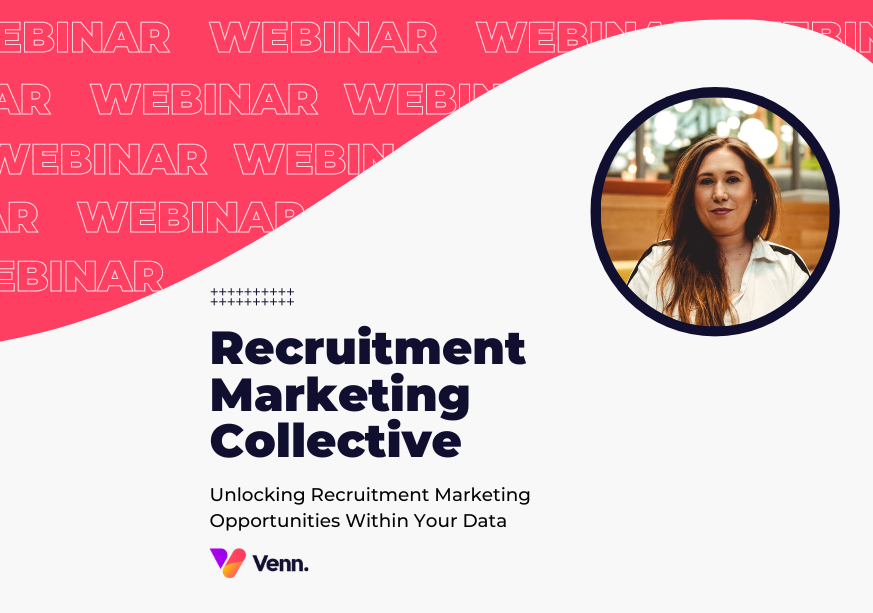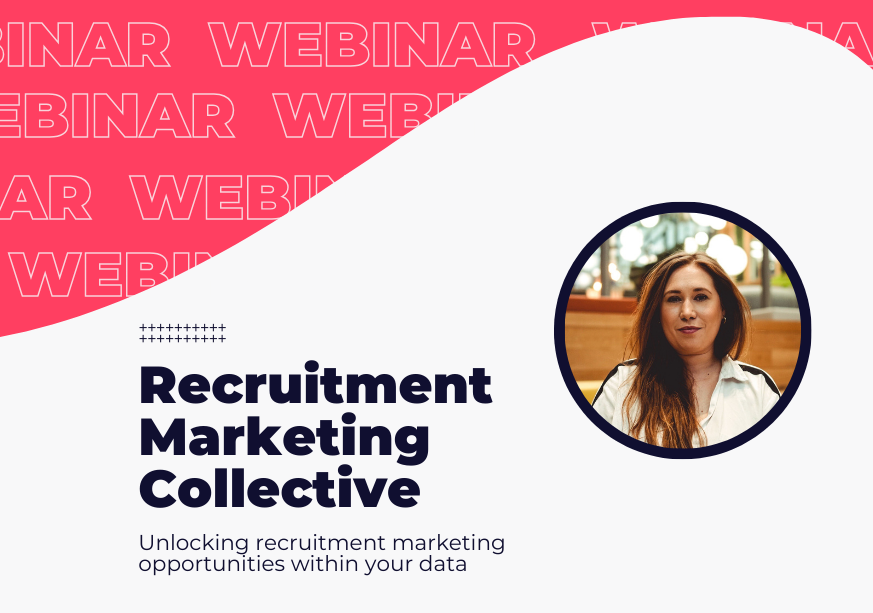Over the last 12 months, my exposure to recruitment agencies, large and small, has increased tenfold. I’ve been in meetings with managers, directors and agency owners from various executive search and talent acquisition brands, and the one question that always comes up is, ‘how do we get more from our recruitment website?’
As a Sales Manager, when I hear the phrase ‘we want our website to be the best sales person.’ I let out a huge sigh of relief as it becomes clear I’m speaking to someone that truly understands the role of marketing.
By this, I mean a person who understands the value of recruitment marketing and its relation to their company's bottom line. These marketing professionals comfortably discuss marketing ROI with their directors and use attribution models to display what activities drive revenue for the business.
Now, I understand that not all marketers are at this level; perhaps you’re a team of one with limited resources, or you're just starting out in your recruitment marketing career. But fear not, because we’ll take a closer look at how and why you should be tracking recruitment marketing KPIs, with tips to help you increase the revenue generated from your strategy.
What recruitment marketing KPIs should you measure and why?
Whilst, to some extent, cold calling will never ‘go away’, we now live in a modern digital world where tech, platforms and the user change daily, and it's the role of marketing to keep up through data-driven decisions.
Knowing what recruitment marketing KPIs to measure comes down to your unique business goals and ideal customer profiles.
KPIs measure the business's progress toward agreed goals; metrics, on the other hand, are measurements of overall business and marketing health. Both are important to bear in mind when tracking marketing performance.
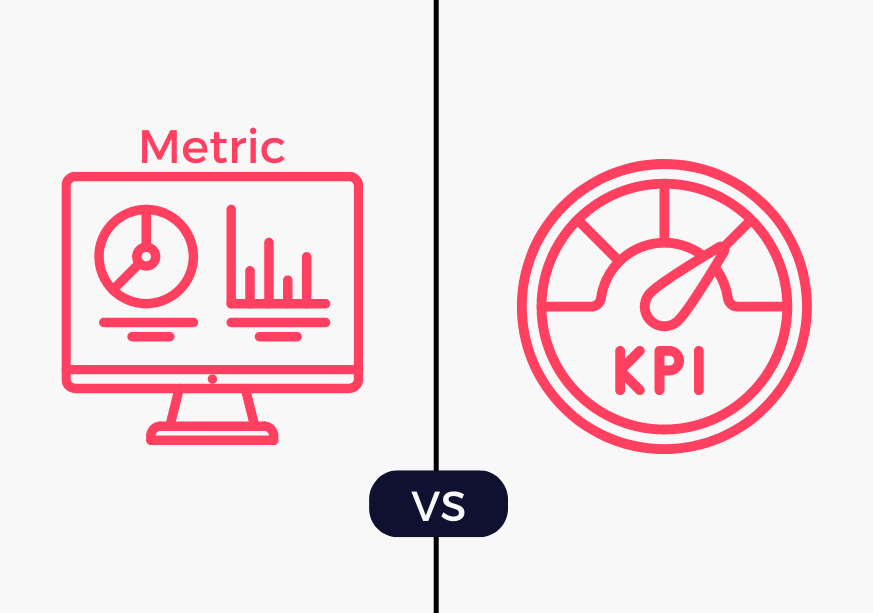
It’s easy to get bogged down in metrics and lose sight of the overall goals. Setting recruitment KPIs for your campaigns helps keep you on track. Likewise, a company-wide understanding of your ideal customer allows your activity to be more targeted, effective, and measurable. Try asking marketing and sales questions.
- Who is your audience?
- Where do they hang out?
- What are their drivers?
- What are their interests?
Every campaign or activity has a purpose. For example, your target is to increase applications by X%, so you run a LinkedIn campaign targeting your ideal candidate. For this campaign, your KPI would be applications and the number of qualified candidates. Now that was a simplified example, it may not always be that clear cut, but there are a few questions you can ask to clarify the outcome and, therefore, what to measure to determine success.
- What is your conversion path?
- Is your conversion path omnichannel?
- What action do you want the user to complete at each stage?
There are two types of metrics; hard metrics and soft metrics. Hard metrics refer to traditional, quantitative measurements, often related to revenue generated. These include the number of applications, conversations on the website and leads generated for recruiters.
Soft metrics are usually more subjective and not always directly related to revenue, for example, engagement rates, bounce rate and the number of sessions. Whilst hard metrics will be better at showing ROI; it is crucial to consider both types and how they relate to your goal. For more advice on what metrics to measure in recruitment marketing, read our other blog on Delivering Effective Recruitment Marketing Reports.
Is your site set up to measure the right recruitment KPIs?
With any marketing and buying decision, there are, on average, seven touch points on the route to conversion; these could include advertising, social posts, email marketing or recommendations. These help push people towards a decision from the original discovery of your brand or services. At each interaction, brands should track KPIs and ensure clear conversion points for active and passive candidates and clients.
Unlike in an eCommerce purchase, the buying journey for a candidate is slower and more convincing through campaigns and content marketing. Think about your last buying experience. Your journey likely started with a Google search, whether a product or service.
By comparing this journey to a candidate or client looking for recruitment services, you can break down the touchpoints and identify whether your site is set up correctly. This will help you optimise the search visibility, user experience and calls to action to encourage more conversions no matter where they are in their journey.
Think about the following:
- How did your audience search for a product or service?
- What keywords did they type into Google?
- What was the search intent behind their keywords?
- What did they do after visiting your website?
- How long did it take from the first interaction to purchase?
You can utilise all these data points in your recruitment marketing strategy. This information will feed into your content marketing, remarketing campaigns and user experience on your site. All of these things can be managed, measured and adapted.
4 Tools to help you measure marketing performance
There are many products out there to direct your reporting and give you insights into your customers. These tools help you manipulate data to tell a story about customer behaviour on your site and how they interact with your outbound marketing.
The following tools will help you identify the best-performing pages on your recruitment site, areas for improvement and where the majority of traffic is coming from, giving you a complete picture of the customer journey.
Here are some of the tools we recommend to help you understand your data.
1. Audience Personas
Persona profiles identify your ideal customer, giving you helpful details on who they are, their pain points, and what drives them. You may have increased the number of leads and candidate applications, but are they being qualified out? Having audience personas will help you identify the quality of your leads and, therefore, the quality of your marketing approach.
To help recruitment brands identify their target audience, we’ve created a Guide to User Personas in Recruitment Marketing. This guide includes a template that lets you list pain points, characteristics and unique drivers to support your marketing activity.
2. UTM tracking in Google
UTM tracking codes provide a unique URL redirecting users to your recruitment website or landing page. This URL helps you to analyse the traffic and which ads they are clicking on to get to your site. With this information, you can see what ad is performing best, where the quality traffic originates, and what pages convert.
You can add multiple parameters to your URL to customise and help with tracking. These parameters include source, medium, campaign, term and content.

UTM URL Example:
http://www.example.com/?utm_source=exampleblog&utm_medium=referral&utm_campaign=summer-sale
3. Google AB testing
A/B testing is a form of user research that shows how a visitor interacts with experimental pages on your site. Google allows you to test variants by randomly sending users to either page A or B. From this data, you can identify which page is performing best, where users are clicking and how many conversions the page receives. A/B testing allows you to make data-driven decisions on the layout of your web pages, optimising the user experience and journey based on first-hand research.
These tests can be conducted through your Google Optimise account. Here you’ll find support and guidance for setting up your test scenario and analytics to help you measure success.
4. Hotjar
Hotjar identifies and analyses user activity on your web pages. This tool focuses on your users' behaviour to help you optimise pages and improve the client and candidate experience to ultimately increase conversions. Heatmaps, analytics, and feedback tools show you where people are clicking, where they are dropping off the page and how they are navigating through the site. With this data, you can make changes to your web pages to promote a better user experience and encourage a higher conversion rate. This could be adding a form to your page, making your design more accessible or optimising your calls to action.
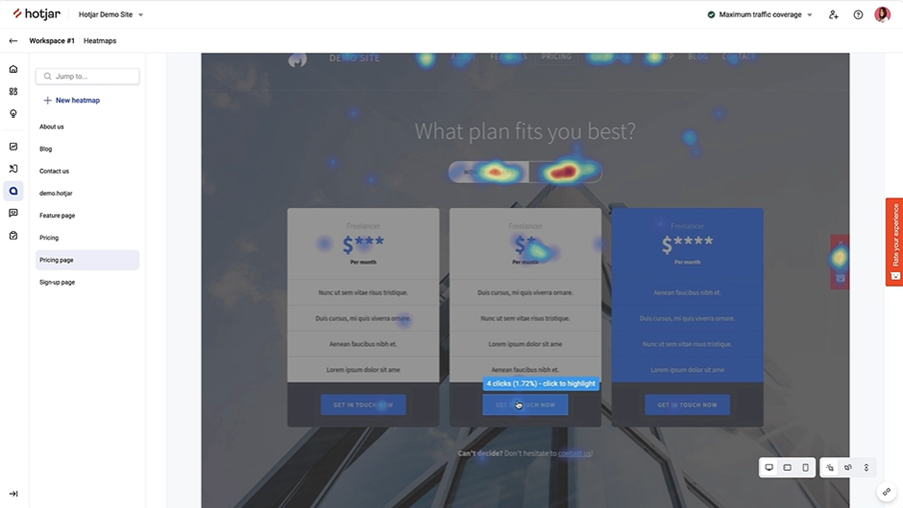
Attribution models in recruitment marketing
Attribution models in recruitment marketing help to identify where success is coming from and display marketing ROI. By setting up rules, these models assign credit for applications, lead generation, and traffic to certain sources or activities. This data lets you understand costs, channel performance and where the best quality traffic comes from.
Say a passive job seeker sees a Facebook job ad on Monday but doesn't click on it. Later, the job seeker comes across your brand again through a LinkedIn campaign; they click but do not apply. On Thursday, the job seeker visits Glassdoor to check out the company and looks through ratings and reviews. Finally, the user visits your recruitment site on Friday and applies for the initial advertised role.
All of the touchpoints before the job seeker landed on your website are what led them to apply. So which touchpoint should get the credit?
There are several different models, and choosing the right one will depend on your campaign, audience and approach. Let’s look at some of the two most common models for marketing attribution.
2 Common types of attribution models
It is not always a one-size-fits-all when it comes to attribution models. Choosing the suitable model will depend on your marketing approach and unique user journey.
Single-Touch Attribution
The First Click Model places all the credit with the user's first interaction with your business, whether this is the job ad, website landing page or social post.
The Last Click Model focuses on the last conversion. Similar to the first click model, this one is limited to a single interaction as the source of truth. For recruitment, this would be the job application.
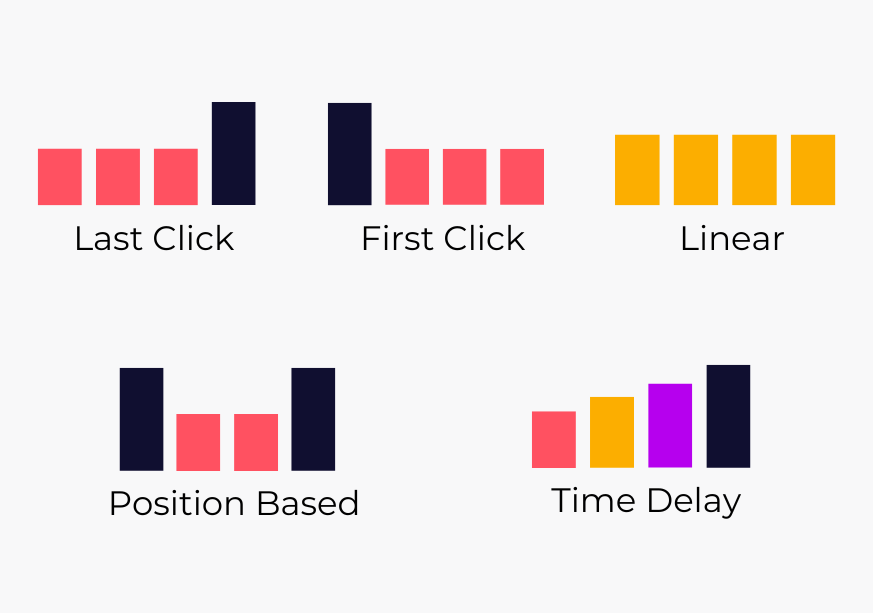
You'll find the single-interaction models more helpful if you have a shorter buyer journey or fewer marketing touchpoints. However, if you are utilising an omnichannel approach to strategy, the multi-touch models will provide more insight to help you improve performance.
Multi-touch Attribution
Multi-touch models are a little more complex and won’t work for every business. The Linear approach considers all the touchpoints that user has come into contact with on their journey. This approach equally distributes the credit, understanding that every step has played a part in moving the candidate or client towards conversion.
The Time Delay model also distributes credit across all touchpoints but does not necessarily do it equally. This approach considers the closeness of the touchpoint to the final conversion. For example, if a candidate went to Glassdoor to read reviews before applying, Glassdoor would receive a large percentage of the credit.
Position-based models use fixed percentages to place credit across all touchpoints. The first and last interactions receive 40% of the credit, while the rest of the touchpoints receive 20%.
How to find Attribution Model Reports in Google Analytics
Google Analytics, as a default, uses the last interaction attribution model. However, you can compare different attribution models within GA to find the best one for you. Visit the ‘Attribution’ tab listed on the left-hand side, in here, you’ll find a comparison feature and support to help you set up your project.

This comparison feature allows you to see how each channel delivers using different attribution models. You can tailor these channels with your UTM codes to ensure the correct data is being tracked. You can learn more about attribution Modelling in Google Analytics by visiting the Google Support website.
Ready to start measuring?
When choosing an attribution model for your recruitment marketing, select one that best suits your business goals. When it comes to marketing ROI, managers should consider attribution to gain insight into the campaigns and sources that produce more conversions. That way, you can make more accurate optimisation decisions on your marketing campaigns and gain more applicants per pound spent on advertising.
At Venn, we set recruitment websites up for success with the tracking and data capture they need to provide insightful reports. So if you’re looking for a partner that specialises in strategies that deliver ROI, speak to one of our experts and check out our recruitment marketing services.





